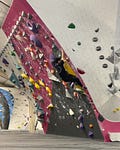Note: This is an unlocked LMA module. If you want access to the rest of Liberation Martial Arts, upgrade your account. We send out learning modules almost daily. If you're no longer getting LMA updates, your payment information may no longer be up to date. Click on the table of contents above to see if you have access to LMA.
The aim of the Liberation Martial Arts approach isn't to produce fighters but to foster better movers who move better through life. Better movement is about better engagement with your world; many of us just happen to be applying our wayfinding skills to martial arts.
Martial arts serves as a comprehensive model for applying our approach because it affords imagination. People can easily see our movements, theories, and principles being transferred to other domains, making martial arts a versatile template that non-practitioners can easily relate to.
However, practitioners have the autonomy to determine how they apply what they've learned; it's not something we can prescribe. In the video, the mover is applying the LMA approach to bouldering. Regardless of the undertaking, it's about approaching it with ease, steady breathing, clear eyes, and attuned senses.
There is no little CEO in your mind ordering your body around its environment as if it were its exploited worker. You are the body, and you are a part of your environment. Movement means navigating space, which is always contextualized by your environment. It requires you to be attuned to your environment rather than alienated from it.
The information for movement is supplied by the environment. Learning to move means learning from your environment. In Marxist terms, this means the information for learning comes from the conditions. The conditions create demands on the body. Supply the conditions, and the body meets demands. Identify a problem and find a solution.
However, coloniality and capitalism have it the other way around, imposing demands and then supplying the conditions. They force solutions and look for problems.
Even radicals may adhere to colonial learning and teaching methods because they struggle to imagine an alternative. Colonial methods are ingrained as a feature of reality. As a result, well-meaning radicals either rationalize these solutions as solving existing problems or actively seek problems that these solutions can ostensibly solve.
Relevant principles from the LMA approach:
It's less about what the movement looks like and more about where you're looking.
Couple your movements with your first-person perspective. Don't move as if you are viewing yourself as an observer controlling your body with a remote control. Attune, don't disassociate.
When you move, you won't see how you're moving. You will only see what you are looking at as you move. Don't get used to information you won't have, nor distract yourself with anything other than the task at hand. Skillful movement comes with urgency, and distraction can lead to injury.
Rather than close-ups, take a long shot. See with the full breadth of your visual field. Close-ups give you limited information without context. Close-ups are also slow and can never move fast enough to track a moving subject. A long shot takes it all in.
The more you move your eyes, the more your brain has to play catch-up.
If you are small, you take up less space, giving you more space to move. If you are big, you are rooted, giving you stability.
Root yourself in your space and move. Movement means moving your roots with you rather than uprooting. It's not about strength or speed but stability.
Practice movement diversity. Over time, your body will gravitate towards relevant movements. There is no right or wrong movement; rather, movements are relevant or irrelevant to a movement goal, as well as destructive or nondestructive to your mind and body.
Knots in a rope increase tension and reduce lifting capacity, making it more likely to snap. The same is true for your mind and body. Tension prohibits wayfinding and skillful movement. Coloniality loves tension and things that cause us tension, like itself.
Wayfinding is easier on your body because you're finding solutions that are right for you rather than conforming yourself to a solution that's been prescribed to you. Conforming your foot to a shoe will injure your foot. A shoe that conforms to your foot will support you. Embodied movements are safer for the body because they come from the body.
To access the Liberation Martial Arts curriculum and contribute to the sustainability of this project as my family and I navigate some recent health and financial challenges, consider upgrading your membership. If you've been putting it off, now would be a great time to sign up. Find other ways to support us here. – Sam
✊✊✊
(I write daily about martial arts and other topics from a liberatory perspective. If you like my work, upgrade your subscription. You can also support me on Patreon or make a one-time donation on Ko-fi. Find Southpaw at its website. Get the swag on Spring. Also check out Liberation Martial Arts Online.)






Fostering Better Movers Through the LMA Approach